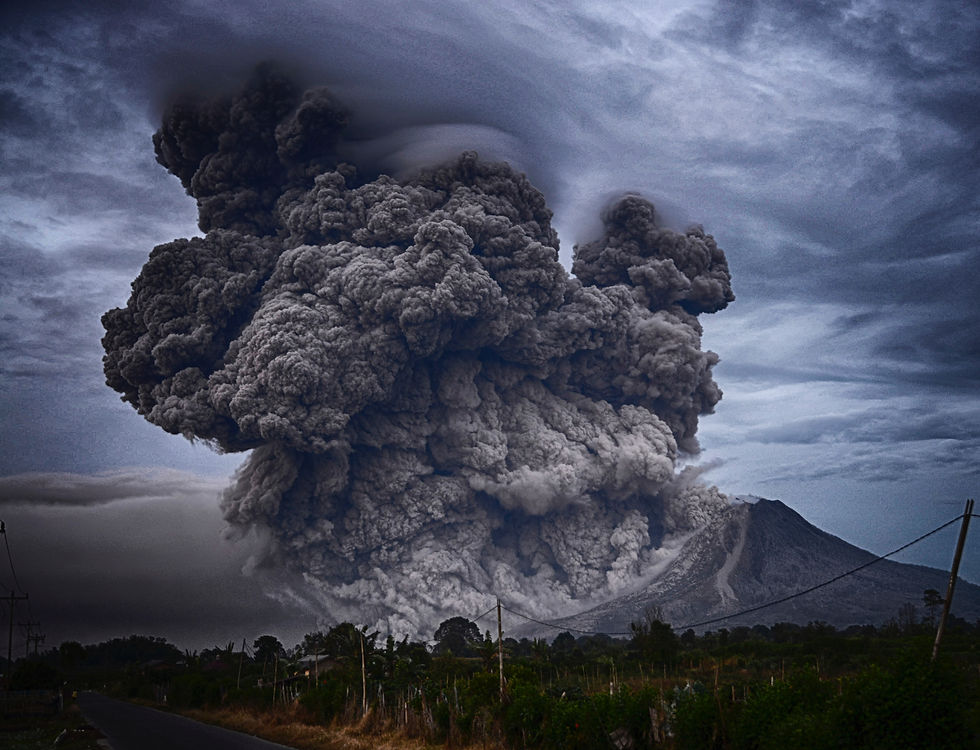How I Used the Volcanic Eruption Near Tonga to Shake Up My Lesson Plans
- Jennifer Smith

- Jan 20, 2022
- 4 min read

Photo by Yosh Ginsu on Unsplash
Do you use current events in your classroom? Are you always seeking ways to connect your lessons to what is going on in the world? I constantly search for strategies to connect student learning to the real world. So when my colleague, Matt Goode, explained his idea for teaching about the volcanic eruption off the coast of Tonga, I was all in.
Our curriculum focuses on world geography, and we had spent several weeks this fall learning about the Ring of Fire. So when I learned of the eruption in the South Pacific, I knew this was an opportunity for students to gain a broader understanding of volcanic eruptions and tsunamis. Matt explained he shared videos and photos of the explosion with his class.
He then put students on the spot. He proclaimed himself the Governor of Hawaii, and he asked his students to brainstorm plans to keep Hawaiians safe due to the tsunami warning. What a brilliant idea to apply student knowledge and understanding, I thought. So, I planned a lesson with the same idea in mind.
Because this lesson was a last minute idea, I had not flushed out every detail. I allowed myself to follow the twists and turns that occurred as the class became engaged.
Introduction
I first introduced students to the event via satellite video. If you have not seen the explosion, you can see the video here: Space.com . It’s really quite magnificent to watch.
I then used Google Earth to show where in the world the explosion occurred as my students know very little about the South Pacific islands. When we explored the location in relation to the United States by spinning Google’s virtual globe, students were surprised to see how small these islands were.
I then shared the USGS tsunami warnings on its site USGS which we reviewed in class together before this event. When students realized a warning was posted for the west coast of the United States, we watched videos of the tsunami waves hitting the Northern California area posted on YouTube.
Brainstorm
I next proclaimed myself Governor of Hawaii. Of course, they laughed. I then asked the students, in groups, to brainstorm suggestions for what I should do to keep Hawaiians safe from the potential tsunami. Students had already studied the basics of volcanic eruptions, tsunamis, and earthquakes. Their background knowledge now had to come into play.
My intent was for students to share some ideas and stop there. However, I saw an opportunity for a more formal approach in the moment. I had been planning opportunities for students to present to the class, and I thought this lesson would be perfect. After allowing the brainstorming to go on for about 6 minutes, I stopped and provided next steps.
Application
I explained students would need to present their ideas formally to me as Governor, and I would select the options I deemed best for the people of Hawaii.
“You will create a slideshow including 3-6 slides. Here is your format-”
Slides 1-2: What happened? (details, science of geography)
Slides 3-4: What should we do? (your suggestions)
Slides 5-6: Why? (explanation of why we should take those specific actions)
I explained this was serious business, and while I wanted creative solutions, I would not accept radical impractical ideas such as building a spaceship and flying us all to Mars.
I also provided them with additional detailed information on the eruption from this National Geographic article to use as they worked: National Geographic .
Students excitedly got down to business.
“Ms. Smith, when is this due?”
I had not planned this out in detail, so I did not have a due date. But I blurted out, “This is an EMERGENCY! It’s due the end of this class period!”
In a real world scenario, scientists and experts must collaborate quickly and provide strategies under pressure. Why not allow students to experience a simulation of such intensity? Students had 40 minutes to complete their slideshow. I explained that as Governor I had other things to do, and we would reconvene for their presentations later (next class period).
For the next 40 minutes, students collaborated, researched, and applied their knowledge. My lesson targeted these skills in a way students usually do not experience. Real world connections make learning more meaningful. Applying knowledge is one of the highest level skills we can utilize, so we need to provide students with opportunities to do so.
How will I assess the project? I have not decided if I will assess. As Governor, I will most certainly provide students with feedback on their presentations, facts, and solutions. However, is it necessary for me to grade the experience? Something to consider.
Like Tim Cavey discussed in his recent blog, my lesson was “messy”. ( It's Okay to Be Messy at the Start ) Often, I find these types of lessons can be some of the best learning experiences students have. No detailed plan allows for new ideas, paths, and questions to arise.
Diving deep into the event helped my students understand that people actually have to do this. Someone has to make these types of decisions, and these skills and knowledge are important.
Digging through the reality of what can happen after a volcanic eruption, my students also uncovered the answer to the age-old question, “Why do we need to know this?”





Comments